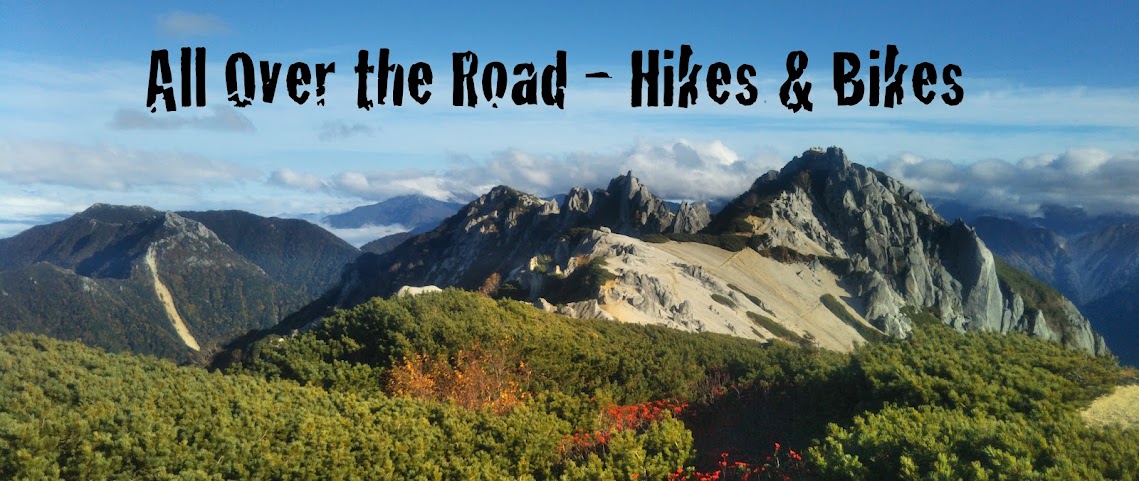Whenever my wife tells me to go take a hike I happily oblige. She said it again last Friday at dinner and by daybreak I was on a train heading into central Japan's Kiso Valley.
The Magome-Tsumago stretch of the old Nakasendo trade route is a well-known and well-trodden trail - and for good reason. Magome and Tsumago are two of the best-preserved Edo Era trade route towns in all of Japan, and are connected by a pleasant (albeit hilly) 7-kilometer walk that takes you through forests and fields and rustic villages that can - and have been - settings for numerous novels and films about the Japan of yesteryear.
I'd walked this section of the Nakasendo several times, as a guide and on my own. But I'd never gone in winter. And I'd never ventured south of Magome or north of Tsumago. The original Nakasendo, the mountainous route between Kyoto and Edo, covered more than 500 kilometers. Tsumago and Magome were just two of 69 post towns where merchants, travelers, and nobility on their way to see the shogun would eat and sleep and trade.
I've no mind to walk the entire route. (I'd cycle it if not for all the stairs.) But I did want to see more of it. In short, that's how I ended up here:
The morning had warmed noticeably since we pulled out of Matsumoto. Good thing considering how I was dressed. The few people on the train, conductor included, likely thought I'd made a mistake by getting off here. Most round-eyes go to Nakatsugawa and take the bus to Magome.
For better or for worse, I've often been told I'm not like most round-eyes.
Ochiai Calling
I like the feeling of being in a new place. Of not knowing what I'll find, even if the initial view looks like the opening shot of a third-rate indie film. The name Ochiai is made up of the characters 落 ("fall" or "drop") and 合 ("meet" or "match"). It would be easy enough to fabricate some degree of auspiciousness in this but instead I just started walking along the river, hoping I wouldn't fall in and match my head to the rocks.
Ochiai is the kind of place where even the new parts are old. It's a persistent theme in Japan, and not only out in the sticks. I think it's a mix of a lack of natural resources and, in line with the Japanese spirit of never changing, a reflection of the paucity of everyday life post-WWII.
But with that ingrained desire to cling to things of the past come pockets of the Japan I will never tire of.
The walk to the old post town of Ochiai-juku led past a cement factory, down a weed-eaten roadside hemmed in by a chain link fence, and across an iron footbridge stretched high above the traffic rumbling and roaring through the center of a crowded, nondescript town. The sidewalks were oddly deserted.
The world grew quiet as the traffic and town fell away behind me. Along a side street homes sat mostly silent and noticeably unlit in the gray of the morning. Painted wooden signs pointed me toward Ochiai-juku in 200-meter increments. A brief and playful moment with someone's golden retriever was my only interaction with anything living.
Until I met Iguchi-san.
He seemed shocked to see me standing there outside Zensho-ji Temple where he was the fuku-jushoku, the second in priestly command. Injecting an occasional English word or two into his gentle Japanese, he invited me into the garden and the glittering main hall of the temple; lit three incense sticks for me to offer in prayer to Buddha; answered my simple questions, giving me his simple views on living well; gladly let me take a selfie with him.
He glanced at his watch, checked his smartphone, and handed me his business card. "Please, come visit again!" he implored.
The next day I sat down to send him a quick note of thanks. His email username was the Japanese phrase for "where are all the travelers?"
In & Out of Town
Ochiai-juku retains scattered relics of its Edo Era existence. Stone lanters called joya-to stand conspicuously along the road. Markers indicate where government check points and tea houses once stood. One old wooden building, perhaps a merchant's shop back in the day, now houses an eclectic craft boutique. And then there's this stained wood, white plaster, tile-topped wall with a gate so grand it could only betray the importance of who and what was inside.
This was the honjin, the inn where the nobility of yore would stay before and after their trek to Edo to meet with the shogun. As if someone locked the gate and then lost the key, the large house behind this beautifully preserved wall looks like it was deserted three or four earthquakes ago.
































No comments:
Post a Comment